In Part 1, published on TMT on 5th July, Joe Ingham wrote about his experiences upon joining the new 79th Armoured Division. He was assigned to an Assault Squadron, RE, where he became a Churchill Mk III AVRE crewman. Part 1 ended with the invasion troops loaded onto landing craft and ships, waiting to cross the Channel, when the order came to delay the landing due to poor weather. We pick up his story on the 5th of June, day the Allies decided to go for it.
The next day we were told it was on. The engines of the ship were started up, and we left harbour. The ship’s crew lined the deck and gave the traditional three cheers as we passed Nelson’s “Victory”, which was moored in the harbour and we lined up behind them and saluted. Then we sailed out to meet the rest of the invasion force. There were scores of landing ships, like ours, some with tanks, some with lorries, some with mobile guns, some with nothing – except men. Frigates fussed about like hens guiding chicks, making sure that everybody went to his appointed station. Now I saw why I had painted that bridge!
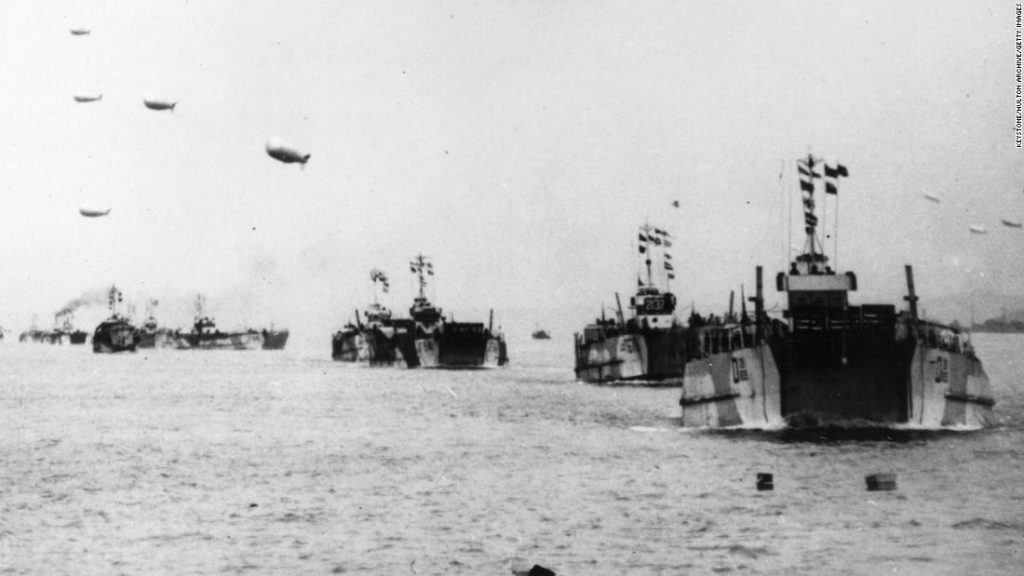
Every ship seemed to have a barrage balloon floating high above it to discourage dive bombers. When we came into mid-Channel (at least I assume it was mid-Channel – we had long ago lost sight of land) we were herded to set positions. It was fascinating to see order coming out of chaos. What was strange was that no ship made smoke! In some peculiar way, our fuel was smokeless, so that the enemy wouldn’t have an inkling of our imminent arrival.
All that night, as we sailed on in the darkness, the rumble of aircraft passing overhead kept us uneasily dosing. It was a reassuring sound: at least they were ours! And we knew that they were bombing the enemy.
At first light, we got up and stripped the netting from the AVRE. We unshackled the deck-chains, and I took down my “hammock”, never to use it again. The driver started his engine and let it run for a few minutes. By the time we were ready, it was getting light.
Our Squadron Leader called us into the cabin, opened a sealed envelope and took out our orders. There were photographs of our beach, which we learned was code-named “SWORD-QUEEN-RED” and we were told to memorise landmarks so that, if the Navy missed our beach by a hundred metres or so, we could get to the exact spot we had to clear. Fortunately, our beach had a very distinctive house standing all alone. We couldn’t miss it – we hoped! We were told it would quite possibly be manned by troops so we should attack it at the first sign of life. We saw the rows of hedgehogs on the beach, some quite clearly armed with mines, but there was no sign of a wall. However, the SBG Bridge would always be useful if there were a ditch to be crossed. We returned to out AVRE’s.
Along the side of the hull a row of crude bent-wire hooks has been welded and these supported a number of lengths of steel-wire rope, the ends of which were spliced to make “eyes”. We also carried, on the side, a group of three scaffold-poles, wired together at the top, and carrying a bright blue piece of cloth, to mark the end of what we would ensure was a “safe” beach.
I had a couple of minutes to spare. I looked around at the cavalcade of ships. I looked at the beach ahead, and it was exactly as the photographs showed, complete with the house. The Navy had done a superb job. As I looked around again, I realised that all the ships, hundreds of them, stretching as far as the eye could see, lay on our left, our right, and behind us. In front of us was nothing but sea – we were the vanguard. Right at the rear, on the horizon, was an enormous ship; I supposed it was a battleship.
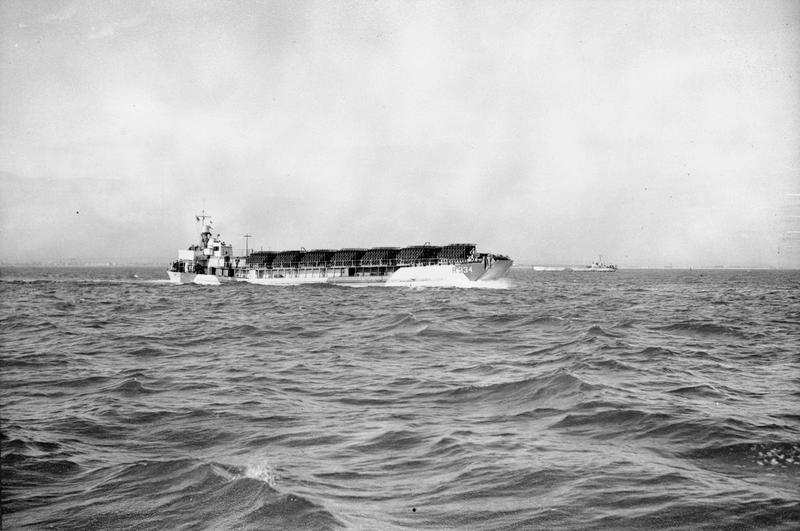
But on our flanks were only flat-decked landing craft, or something very much like it. These were the strangest ships I had ever seen. They had no vehicles on deck. Instead they appeared to have a huge “mouth-organ”, rows of openings extending the length of the deck. As I watched, two of them turned broadside on to the beach, slowed, and the suddenly with a sort of rippling roar, they belched flame and smoke. Within a few seconds, the beach was lined with flashes. Then I understood. They had fired dozens of rockets from the openings I had seen on their decks.
I had no time to watch any more. We were ordered on board our AVRE’s. I squatted in my usual position, in the middle of the floor with my charging-box, between my legs, and the ends of cordtex connected by electric wires to its terminals. I heard the commander tell the driver to start up, then there was a crash and splash as the ramp went down, and we started to move forward.
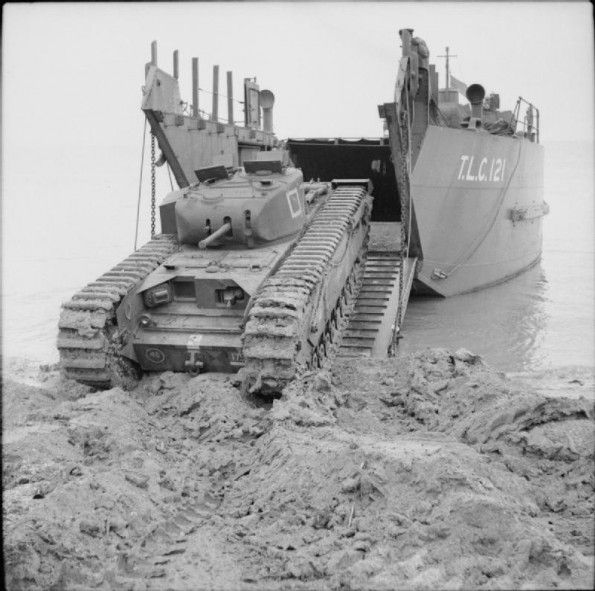
The AVRE tilted downwards and I knew we were in the sea. Behind us would come the rest of the Squadron – it would pay us to get clear of the SBG Bridge which was next to go down the ramp. The AVRE climbed and I watched for the command to unseal. Of course, none of us could see anything – even the commander could only see to the rear or side because the turret was turned sideways to accommodate the fascine. Then through my head-set I heard it – “Blow!” Fingers crossed – this was my moment. I wound the handle and the light glowed. I gave the handle one more turn for luck and pressed the switch. There was the most almighty roar, and the tank turned right and stopped. The commander was getting out of his flaps on top of the turret, and I pushed the side-door open. Feet first, I slid through the hole and stood on French beach.
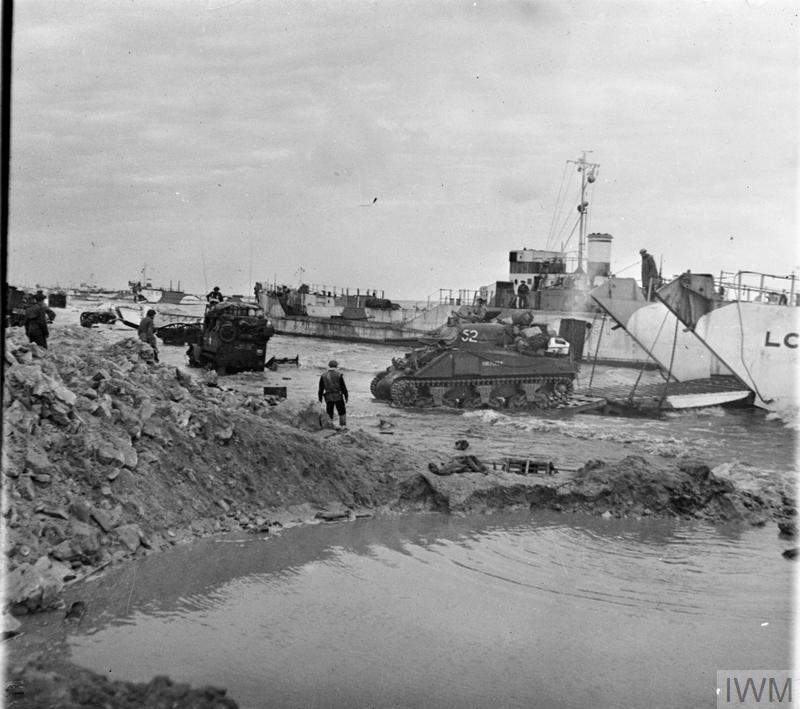
All along the shore-line, our AVRE’s were crawling out of the sea, and there was a succession of bangs as they un-sealed themselves. The commander took the head of the marker poles and I lifted the feet out of their hooks. We stood it up, I opened the feet to make a triangular marker, and we were off! The commander had his mike on a long lead and he got the AVRE started. Slowly, it moved along the first row of hedgehogs under his direction and I walked beside it unhooking the steel-wire ropes and fixing them to the first group of hedgehogs. The AVRE turned and I looped the eye over a hook for each hedgehog and watched as each one was dragged out of its hole and towed away. At the end of the run, by the marker-poles, we unhooked while the AVRE waited, then the process was repeated along each row in turn. At last “our” beach was clear. The AVRE stopped.
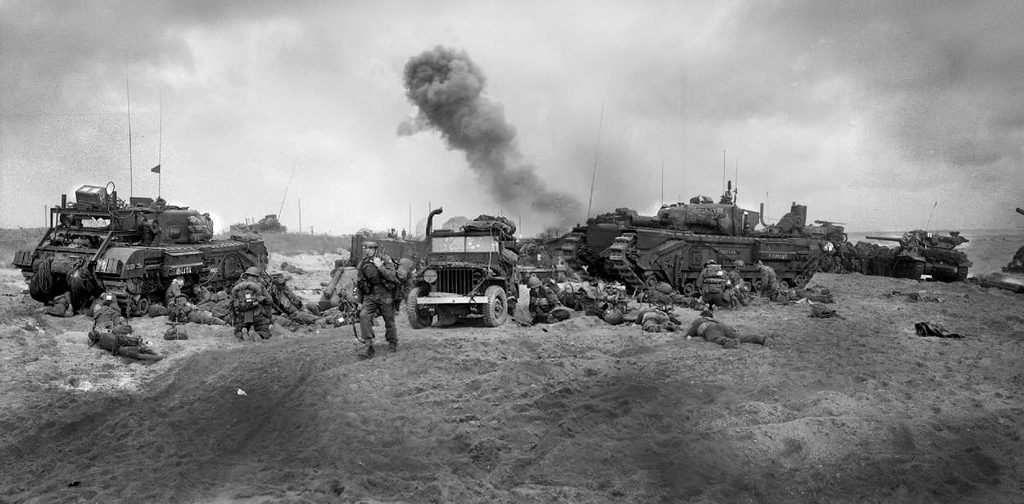
I shall never know why no mines blew up. Had one done so, I doubt whether it would have harmed the AVRE; as to myself, I’m not quite so confident.
The commander climbed up on to the top of the turret, but he did not get back in. With the fascine in position, he would have been quite unable to direct the vehicle, so he had to ride on top. The noise was continuous. A carpet-layer was putting down its “wad” further up the beach, and an SBG Bridge was stopped at the top of the sand, looking a bit forlorn, with nowhere to go, and nothing to do. We were sure the beach would not be mined, as they deteriorate quite quickly in salty conditions, and as the Germans had not expected us to land in Normandy, there would not have been any last-minute, panicky, mine-laying. However, the flails could always be used if there were any doubt.
However, the road which ran along behind the beach was a different proposition, so we stayed on the beach. I signalled to the commander, my door opened, and I slid in. We retired, or perhaps “advanced” could be a better word to the top of the beach. Ships were still arriving and infantry were wading ashore and taking up positions at the top of the beach. Already, snipers had found a few men, and I wondered how anybody could have survived the attack of those rocket-firing ships.
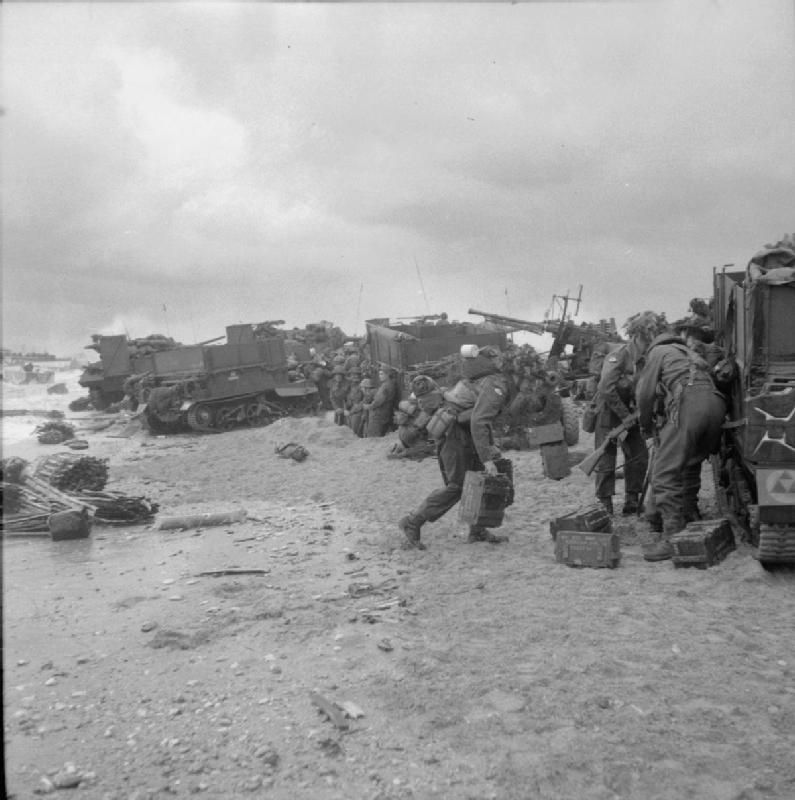
I think that by now our commander must have been getting more and more frustrated at not being able to operate his turret, because I heard him order the driver to cross the road, and we would look for a useful hole to dump our fascine. Actually, we found one quite quickly, and I thankfully connected up, wound up, and fired, and as we drove back to the beach I heard that the fascine had done its job. All of us now got out, except the radio-operator and commander, and, using the tank as protection, we brought a few of the wounded into its cover, on the sand, and used their field dressings to patch them up as best we could. Every ship which touched down and disgorged its contents, men or vehicles, was used as an ambulance to take men back for treatment at home, so we had a fairly steady flow, a few at a time.
We could now operate the turret, and the spigot-mortar. To load the mortar, the turret had to be turned to face slightly left. This brought the mortar over the co-driver’s opening, so when he opened his flaps, he could reach up, tilt the mortar vertically and push a dustbin up into it. Then a flip with his hand, and the mortar swung to horizontal ready to be fired. Crude? Yes, it was; but the results were deadly.
Some time later (I cannot remember what the time was) the commander received a radio message that we were needed at the canal, which was at the eastern end of the beach. Nobody had landed to the east of us, but as the infantry fanned out in order to consolidate a bridgehead, they had come under fire from a lighthouse which was on the end of the canal.
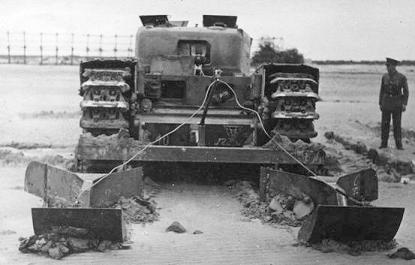
We arrived to find a tall lighthouse with a small concrete blockhouse standing across the road from the lighthouse. Enemy machine-gunners were firing from the slots in the lighthouse, and the infantry had taken shelter behind a wrecked building some 50 metres away. We drove the AVRE towards the blockhouse, stopped, and for the first time, the gunner fired our mortar. The dustbin flew quite leisurely towards the blockhouse, there was a brilliant flash, and when the smoke cleared, the gunner reported that the blockhouse had disappeared. We turned towards the lighthouse, and the co-driver aimed our machine-gun at the slits in the lighthouse wall, starting at the top. We were unable to use the mortar, as it was a fairly slow process to load it. However, it wasn’t required. German soldiers began to run out of the bottom doors of the lighthouse, and were obviously surrendering. The commander raised his turret-flaps, and climbed up to the top of the turret. The infantry then advanced and lined the Germans up, took away their weapons, and they were marched back to the beach.
What happened to them I don’t know – I never saw them again, but prisoners were told to dig themselves a trench and wait to be taken over by the military police – at least, that was the usual drill. Records show that there were 51 soldiers and 6 officers taken prisoner from that lighthouse.
As for us, we “parked” the AVRE off the coast-road, and, leaving the gunner and driver on board, the other four of us joined the infantry in adopting defensive positions facing any possible assault from the other side of the canal.
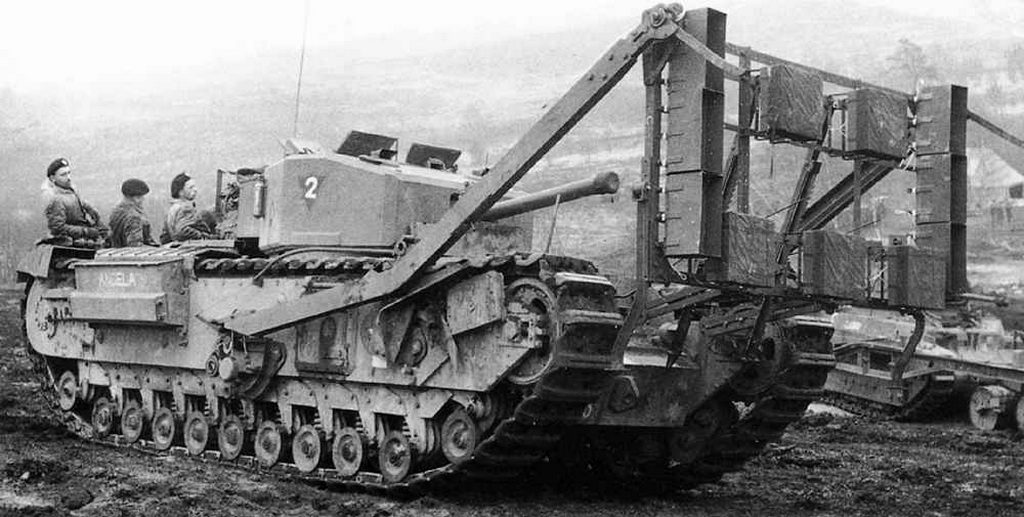
It was while we were at this point that a civilian appeared on a bicycle and wearing a rather old French helmet. He approached us and was kept at approximately twenty metres distance, under very watchful eyes (we were very much aware that not every Frenchman was glad to see us). The commander called to me that as he couldn’t speak much French, would I find out what he had to say. My French at that time was 100% schoolboy standard, but he was patient, and I gathered that he was a member of the “maquis”, the Resistance, and he was offering us information regarding the enemy. The best we could do was to send him back to the beach to find an officer. I haven’t a clue how he got on after that.
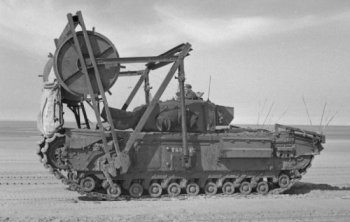
We stayed there, and I remember lying behind a ruined wall of the blockhouse nursing my Sten gun, hoping that no Germans would appear. None did, and as the light faded a rumble from the north heralded a procession of towed gliders. These were very large and were towed by Hercules air-craft which released them to land on the other side of the canal, out of our sight. So we were relieved. We stood down, and thankfully retired towards the west, pulled into a field and brewed up. I can’t remember ever eating in action; of course we did: but I can’t remember ever doing it.
We carried tank-rations – which was a box very neatly packed with such delicacies as dehydrated porridge, biscuits, powdered tea-milk and sugar, chocolate, tins of stew, which could be heated by lighting a “wick” with a cigarette end and standing the tin on the ground, boiled sweets, tinned meat, cigarettes, matches, all rationed out for seven men, the normal tank-crew. We lived on these for the first few days of the invasion.
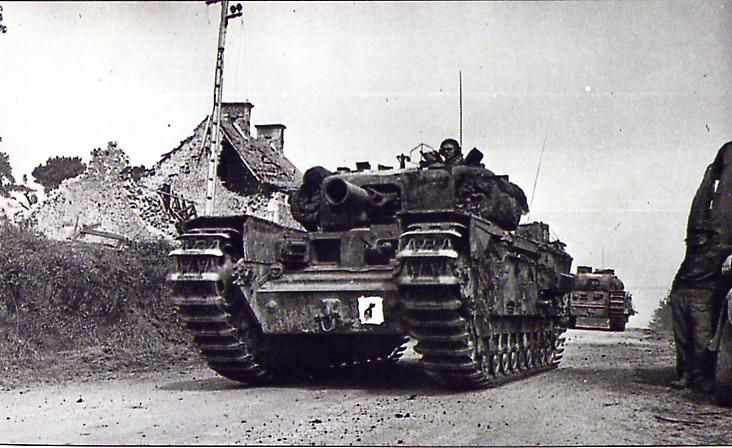
That night we slept in a field, beside the AVRE, fully dressed and leaving two men on guard. We had seen only 3 enemy aircraft, a group which flew along the beach, low down, and very fast. They had come and gone almost before we knew it, but it was a reminder that we were in enemy territory, and that at any moment all hell could break out.
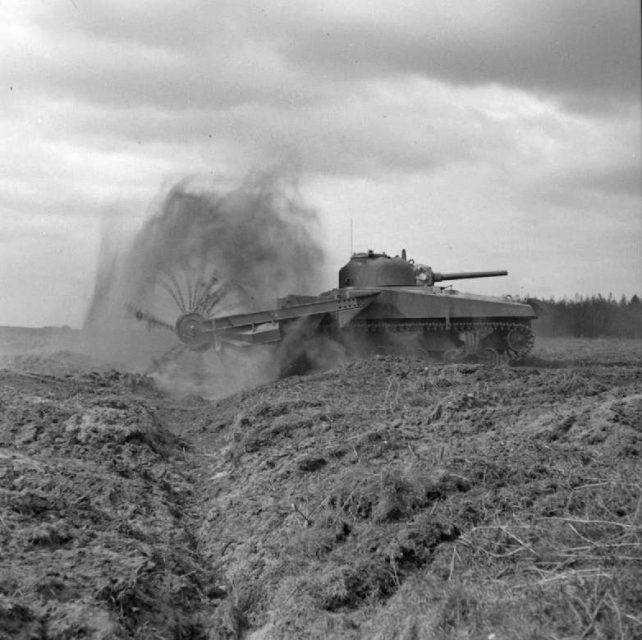
The results on the beach were pretty good. Almost all the Crabs were knocked out by enemy fire very quickly, which meant the results had to be lifted by hand in the open. We had arrived on the beach at 0725, five minutes early. Three assault bridges and three log carpets had been laid by numbers one and two Troops of our Company. I was in Number Two Troop.
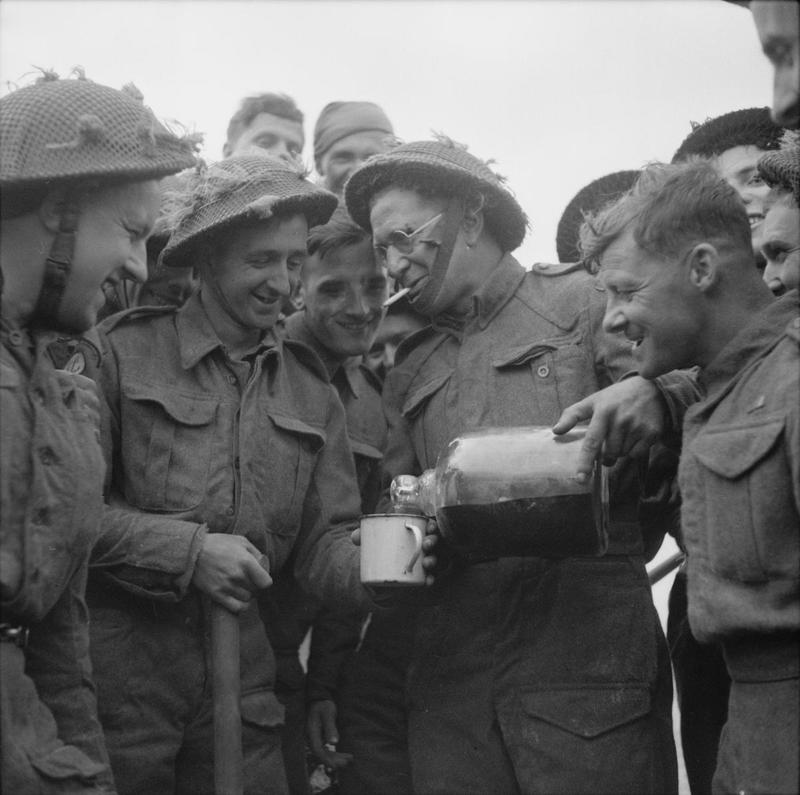
In Part 3, Joe Ingham describes the events in his life leading up to the battle for Normandy.
The original text was written by Joe for his family in 1994. In his introduction to his memoirs. Joe wrote:
“I give you my account, then of one man’s war, in the hope that in reading it you will share with me some of my memories, and so that what was done by so many will not be wholly forgotten now that so many of them are dead.
War produces a great many heroes, and a far greater number of very ordinary men like myself who, faced with an arduous and often very dangerous task, simply closed their ears and minds to danger and got ‘stuck in’. And if you detect a touch of pride in my account, then please be assured that it is not pride in what I did, but pride in the fact that in company with an enormous number of men of my generation, I did not sit back and let somebody else fight my war for me.”
Roger Brown has submitted the text to TMT with permission of Joe’s family, to whom we are very grateful for allowing it to be published.

Comments on AVREs at D-Day: Part 2